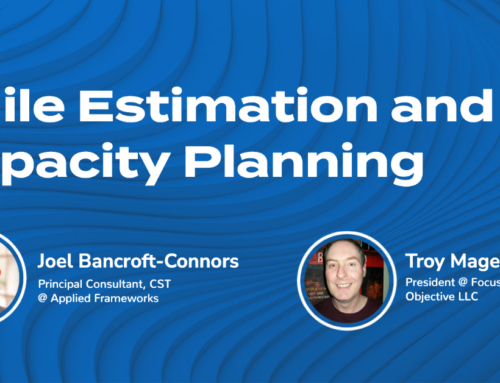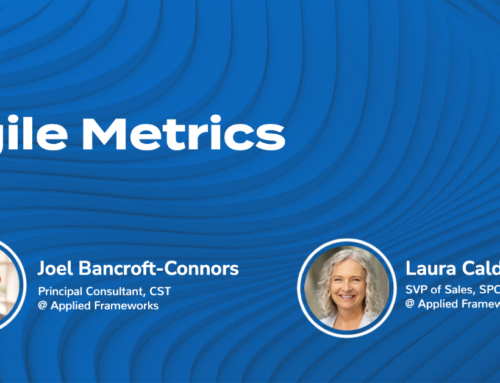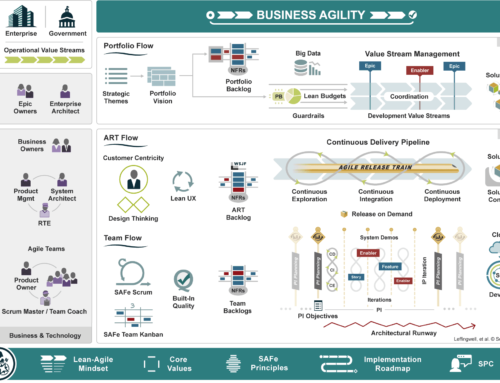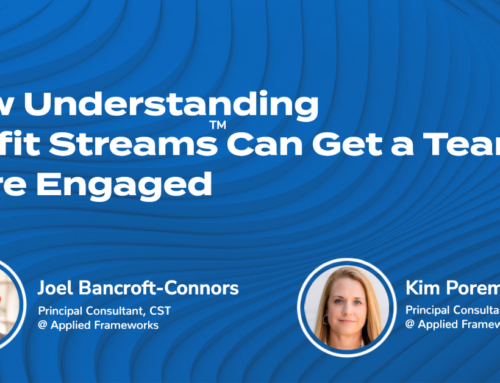Congratulations, you’ve taken the Implementing SAFe class, passed the certification exam, and have become a SAFe Program Consultant (SPC)! Now what?
This is just the beginning of your journey. To truly master the subject matter and become an agent of change, you need to commit to relentless growth. I recommend these 6 tips for new SPCs:
- Baseline your current skills.
- Develop your personal growth backlog.
- Join the SAFe community.
- Gemba walk with other SPCs.
- Deep dive the toolkits.
- Review your growth backlog and repeat.
Top 6 Tips for New SPCs
1. Baseline your current skills
Take inventory of your current skills and areas of opportunity. Use data, organizational context, and personal ambition to set goals. I have found self assessments, like the Agile Coaching Growth Wheel, to be a good starting point for an SPC beginning their journey.
2. Create a personal growth backlog.
Pull one item from your personal growth backlog at a time and do it.
Use the insights from your self assessment to seed your personal growth backlog. I did not have the benefit of the Agile Coaching Growth Wheel being available when I started my journey, but was fortunate enough to work with a Transformation Partner who had a self-assessment.
3. Engage in the SAFe and Lean-Agile Community
Expand your network through involvement in informal learning networks. I recommend reading this great blog series by SPCT Audrey Boydston.
- Find a mentor.
- Find an accountability buddy, possibly from your Implementing SAFe class.
- Participate in the greater Lean-Agile community. Communities engaged include: The Scaled Agile Community Portal and forums. Meetups. Discord/Slack Communities. Communities of Practice.
The SAFe community and greater Lean-Agile community are amazing sources of knowledge and differing perspectives. By participating in the community, you can practice the skills that will make you a more effective SPC.
4. Gemba walk with other SPCs
Find opportunities to see how other organizations are practicing SAFe.
The insights gained through Gemba walks can make a big impact in your own organization — and your own growth. For example, an important part of being an SPC is the ability to communicate the impact of not doing something while discussing challenges and potential tradeoffs.
5. Deep dive the toolkits
The SAFe toolkits can be used to help solve many business problems and accelerate an SPC’s journey to a deeper understanding of SAFe. All of the toolkits provide information that accelerate learning. Here are a few specific Toolkits and accompanying Facilitator’s Guides to kickstart your growth journey:
- PI Planning Toolkit
- PI Execution Toolkit
- Implementation Roadmap Toolkit
- LPM Execution Toolkit
6. Review your growth backlog and repeat
Periodically reassess where you are on your journey and adjust your backlog to account for shifting priorities.
Use data to inform adjustments by asking for feedback from people with whom you have been working closely and a mentor/friend from your learning network.
Pull one item from the backlog and execute.
Commit to Relentless Improvement
The pace of change is relentless. An SPC’s learning must be too.
Becoming an SPC can be a springboard for your career, but to fully take advantage of what you learn, you must continue learning to become a fully realized servant leader.






